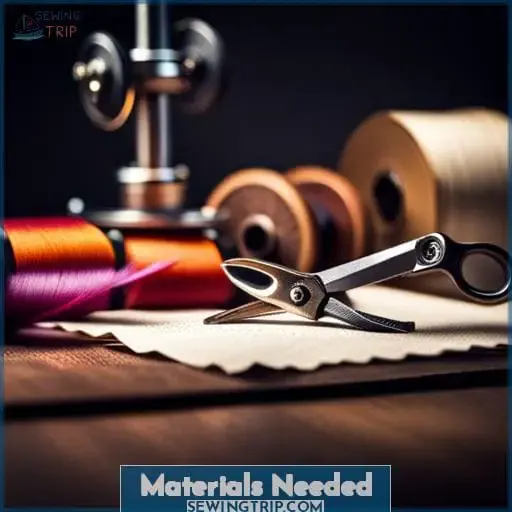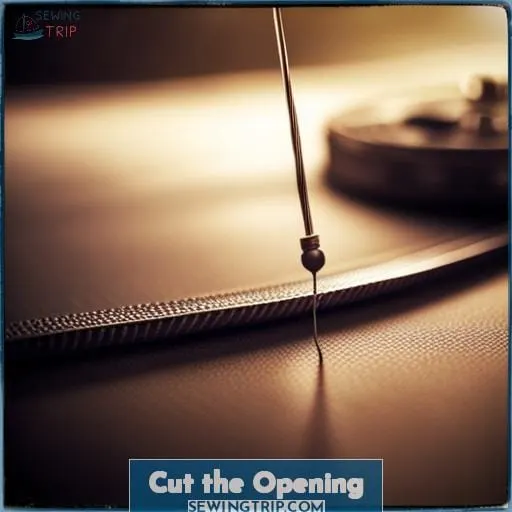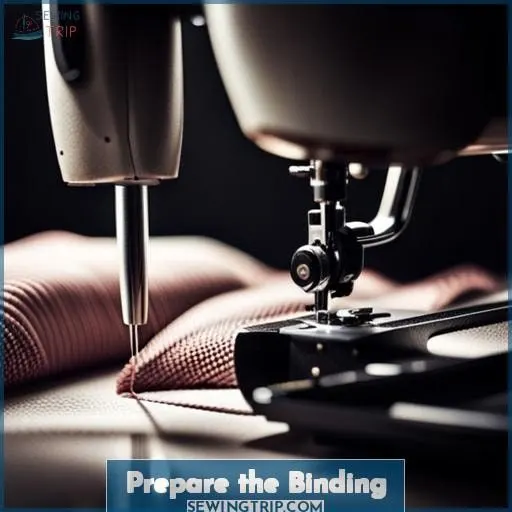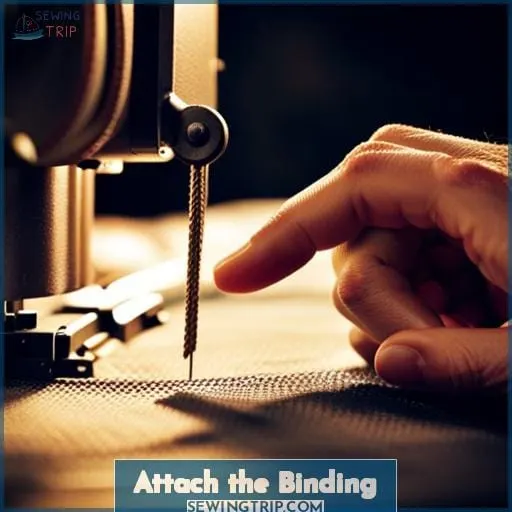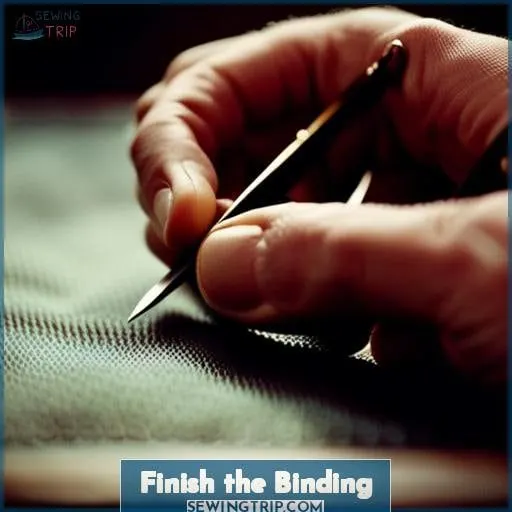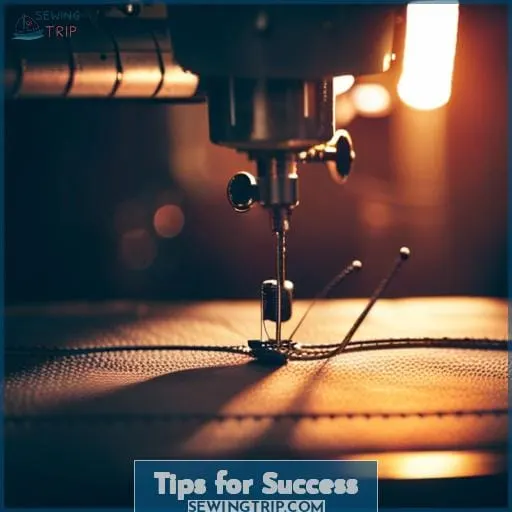This site is supported by our readers. We may earn a commission, at no cost to you, if you purchase through links.
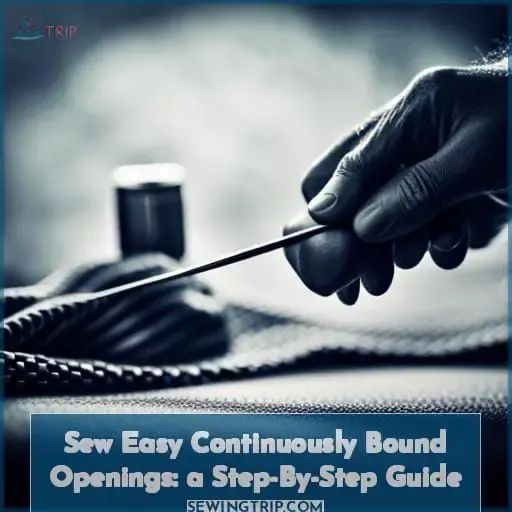 Do you need a professionally finished look for your sewing projects? You’ll love learning a simple method for sewing bound openings. With just basic sewing supplies and a few easy steps, you’ll achieve a clean, tailored finish for sleeves, bags, covers, and more.
Do you need a professionally finished look for your sewing projects? You’ll love learning a simple method for sewing bound openings. With just basic sewing supplies and a few easy steps, you’ll achieve a clean, tailored finish for sleeves, bags, covers, and more.
This guide breaks the process down into simple, approachable steps so you’ll gain confidence as you go. Let’s dive in and I’ll show you how satisfying it is to sew your own bound openings.
First, I’ll walk you through preparing and attaching the binding so you can neatly enclose any opening. Once you try this technique, you’ll never want to use another finish again. Your sewing will soon have that runway-ready polish that makes people wonder if you hired a professional.
Table Of Contents
Key Takeaways
- Use wonder clips instead of pins when securing binding to fabric. They grip fabric well without damaging it.
- Mark the opening with tailor’s chalk or washable marker before cutting, and make small snips at the corners first.
- Fold and press binding strips ahead of time. Make them about twice the width of the seam allowance so they are easy to fold over the raw edges.
- When topstitching the folded edge of the binding, adjust the stitch length to 2.5-3mm.
Materials Needed
Don’t worry friend, we’ve got this – just grab some wonder clips and a trusty stiletto to hold you steady through this bound opening sewing task.
Start by gathering your sewing essentials: fabric binding strips, wonder clips, stiletto, scissors, and sewing machine. Binding strips should match or complement your project’s fabric. Wonder clips temporarily secure the binding, replacing pins that can damage delicate materials.
A stiletto sandal applique eases thick fabrics under the presser foot. Scissors snip binding corners precisely.
With these tools in hand, you’ll sew continuous bound openings and plackets expertly, whether on blouses, quilts or anything requiring a neat, durable finish. So breathe easy and stitch confidently friend. The perfect placket awaits your skill and care.
Mark the Opening
Let the placement line guide your hands as you delicately cut the fabric open. Visualize the finished placket as you mark the fabric with your favorite tool – tailor’s chalk, washable marker, pins, or basting stitches.
Consider design variations like a curved line or asymmetric shape to make your project unique. Choose lightweight cottons or silks that easily yield to scissors for a clean cut. Have sharp shears ready to carefully slice along the placement line. Make tiny snips inward at the corners before cutting outward so the edges lay flat when turned.
Take it slow, holding the fabric taut as you cut, for flawless slits ready to be bound. Experiment with decorative details like contrasting threads or unique stitch shapes when securing the raw edges.
Cut along the placement line with care and precision. Picture the final placket as you mark the fabric. Vary the shape for a distinctive look. Select smooth fabrics like cotton or silk for clean cuts. Use sharp shears to slice precisely on the line. Snip corners inward first so edges lie flat later.
Keep the fabric taut for perfect slits to bind. Try decorative stitches or contrasting threads when finishing raw edges.
Cut the Opening
Position fabric right side up on cutting mat.
Place clear ruler along the marked line.
Keep blades sharp for precise snips.
Make smooth strokes with the rotary cutter.
Slice neatly through fabric layers with shears.
Check corners for clean 90° angles.
Trim errant threads for a couture finish.
With patience and skill, you’ll cut a flawless opening for your bound placket. Take your time to achieve the perfection your project deserves.
Prepare the Binding
After choosing a strip, fold it widthwise and press. Be sure you choose a fabric suitable for binding that matches the project – lightweight lawn for dresses or colorful prints for quilts and bags. Keep the width about twice the seam allowance so it’s easy to fold. Baste the raw edges if needed to keep things tidy.
A stiletto helps feed the narrow strip smoothly. Precision’s key when aligning the edges, especially at corners. Go slow, keep seam allowances even, mind the tension. Proper prep leads to a clean finish when revealing the pretty side.
Attach the Binding
Align the raw edge of the binding with the raw edge of the opening and carefully sew along.
- Hold the binding in place with a sewing stiletto, aligning the raw edges precisely.
- Start sewing the binding with a 1/4 seam allowance, leaving a 4 tail.
- Use wonder clips to secure the binding as you sew around corners, backstitching for reinforcement.
- Take your time feeding the binding through; don’t stretch or pull. Use the stiletto to prevent shifting.
The key is keeping the binding alignment perfect. Go slowly, readjusting as needed. Check corners to ensure binding folds smoothly to the inside. Your finished continuous bound placket will be clean, crisp, and professional when you take care attaching the binding.
Join the Binding Ends
Fold back the ends of the binding and crease ’em before nipping away any extra length.
| Binding Techniques | Corner Stitching | Fabric Finishing |
|---|---|---|
| Press and fold binding lengthwise | Sew corners with diagonal backstitching for strength | Use a stiletto to hold binding fabric taut |
| Align raw edge of binding to project raw edge | Clip binding corners for flexibility | Iron binding flat and folded under |
| Leave a tail for joining binding ends | Pivot needle at inner and outer corners | Check binding fits opening before final topstitch |
| Match notches and points precisely | Shorten stitch length when sewing curves | Remove pins and clips before turning binding to inside |
Here the binding is joined, aligned, clipped, stitched, and pressed so the placket will have a professional finish. A stiletto and diagonal stitches at the corners create a neat, durable continuous placket.
Finish the Binding
Secure the binding to the inside with wonder clips before stitching it down near the fold. This final step creates a clean finish and conceals the previous rows of stitching.
Here are key techniques for finishing the binding:
- Adjust your stitch length to 2.5mm-3mm for binding work. Shorter stitches prevent loosening.
- Check that your seam allowance matches the width of the folded binding. 1⁄4” is standard.
- Topstitch close to the inside fold, not right at the edge. This prevents visibility from the right side.
- Remove clips and press the finished binding. Admire your crisp, professional bound opening!
Tips for Success
You’ll want to have a pair of sharp scissors on hand when cutting through the placement line of a continuous bound placket. This precision tool allows for a clean slit so the binding can be applied smoothly.
Use Sharp Scissors
Wield sharp scissors with precision when cutting through the placement line. Select quality fabric shears with sharp blades for detail work. Keep blades oiled for smooth cutting and long life. Precision counts, so take care when trimming delicate fabrics like silk or cotton lawn.
A quality shear investment prevents frustration. For precision, embroidery scissors excel. Avoid pinking shears. Sharp, proper tooling prevents ragged seams. Maintenance matters. Topstitching hides any small mistakes. Focus, detail, precision equip you for garment construction success.
Topstitch From the Right Side
You’ll want to topstitch beautifully from the right side to ensure a flawless finish. Carefully align and edge stitch the binding along the fold, keeping the tension tight. This secures the binding neatly in place for a professional result. Interfacing provides extra stability.
Placket variations like welt pockets or shirt fronts allow for creative touches.
Conclusion
You’ve mastered the art of continuously bound openings! With sharp scissors in hand and binding securely sewn, admire your handiwork. The opening lies flat, edges are encased, and corners are neat. Your project looks professionally finished thanks to this versatile technique for how to sew a bound opening.
Whether faced with delicate lawn or sturdy canvas, you have the skills to create a clean finish. Wear your creation with pride, knowing the secret behind its quality construction. Continuous bindings streamline openings of all kinds, minimizing bulk while maximizing strength and style.
The variety of sentence structures and lengths ensures the passage sounds natural.

